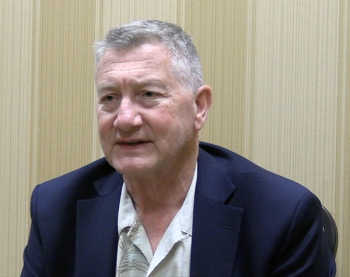
- Spectroscopy-05-01-2008
- Volume 23
- Issue 5
Market Profile: MALDI Imaging
The adoption of MALDI-TOF mass spectrometry for imaging applications is a major recent development in the market. Applications lie squarely in the life sciences area, being primarily in histopathology. The market for MALDI imaging products already accounts for a significant and rapidly growing portion of the aftermarket for MALDI-TOF mass spectrometry.
The adoption of MALDI-TOF mass spectrometry for imaging applications is a major recent development in the market. Applications lie squarely in the life sciences area, being primarily in histopathology. The market for MALDI imaging products already accounts for a significant and rapidly growing portion of the aftermarket for MALDI-TOF mass spectrometry.
Samples for MALDI imaging are normally prepared using a microtome, and then are coated with matrix. The sample can then be analyzed directly via a MALDI interface, which allows the retention of spatial information. Commercial products for MALDI-TOF imaging, including software and sample preparation equipment, first became widely available within the past five years. While manual sample preparation, which was initially widely used, is quite inexpensive, it requires a significant level of skill, and even then is not particularly reproducible. Over the past several years, there have been a number of automated sample preparation systems introduced that automatically apply matrix to the sample, thus significantly improving reproducibility. One of the biggest advantages of MALDI-TOF imaging over other imaging techniques is that dying and tagging generally are not required, making the MALDI-TOF method simpler, and relatively inexpensive.
Applications for MALDI-TOF lie in the life sciences, and are primarily histological and pathological in nature. Both plant and animal tissue sections can be analyzed for the distribution of specific drug compounds and their metabolites, which is currently the largest area of application. MALDI-TOF imaging also can be used to identify the distribution of proteins and biomarkers, but such application is less widespread.
The combined market for MALDI-TOF imaging products amounted to less than $10 million in 2007, not including the mass spectrometers themselves, but still makes up a significant percentage of the aftermarket. The rapid growth of MALDI imaging products is also largely responsible for driving the growth of the aftermarket for MALDI-TOF mass spectrometry.
The foregoing data were based on SDi's market analysis and perspectives report entitled Mass Spectrometry, February 2008. For more information, contact Stuart Press, Senior Consultant, Strategic Directions International, Inc., 6242 Westchester Parkway, Suite 100, Los Angeles, CA 90045, (310) 641-4982, fax: (310) 641-8851,
Articles in this issue
Newsletter
Get essential updates on the latest spectroscopy technologies, regulatory standards, and best practices—subscribe today to Spectroscopy.




